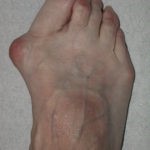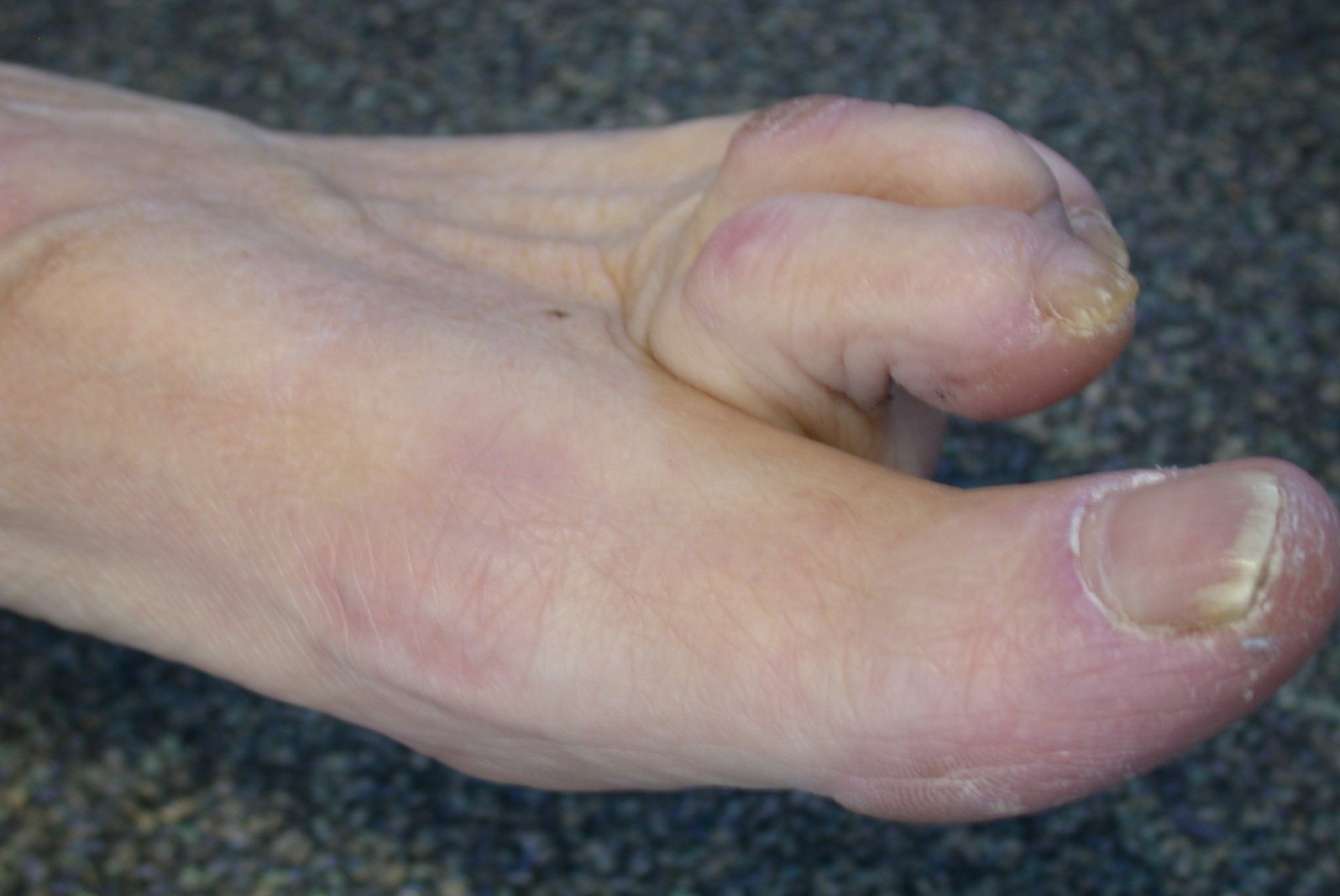Foot surgery
The focus of the foot surgery spectrum is corrective interventions for malpositions on the forefoot, e.g. Hallux valgus, Hallux rigid (Arthrosis of the big toe joint), Claw toe and Achilles tendon procedures for recent and old ruptures (cracks) or chronic pain with lump formation (Achillodynie, Haglundferse).
Hallux valgus is the deviation of the big toe towards the outside of the foot due to a malposition of the metatarsophalangeal joint. It usually develops secondarily as a result of a splayfoot with a corresponding genetic disposition. Fashionable footwear, tapering at the front and/or higher heels can also benefit the training. There are usually other misalignments in the metatarsus, small toes and tarsus, the combination of different misalignments can vary greatly in terms of severity and the number of toes involved.
The therapeutic procedure for interventions on the forefoot is therefore very complex and must always be determined on a case-by-case basis.
Hallux rigidus is arthrosis of the metatarsophalangeal joint of the big toe, those with more or less pronounced bony attachments (Osteophytes) in the vicinity of the damaged joint parts. The symptoms caused by this can be very different: either pain when walking due to the rolling process of the foot or just discomfort due to the pressure of the bony attachments in the shoe, or a variable combination of these complaints.
Depending on the symptoms and the underlying pathological change, the therapeutic procedure for hallux rigidus also varies greatly from person to person.
Anti-inflammatory drugs are conservative treatment options, sufficiently wide footwear, stiffening shoe soles and rolling aids (Hallux rigid Rolle) available. If this does not achieve a satisfactory improvement in symptoms, Depending on the constellation of findings, different surgical procedures can be used:
Removal of the disturbing osteophytes, especially on the back of the foot on the metatarsal heads and the base of the phalanx (Cheilectomy), possibly. in combination with one
dorsiflexing (towards the back of the foot) Conversion of the big toe phalanx,
stiffening of the metatarsophalangeal joint in the functional position (preferably in younger patients),
arthroplasty of the metatarsophalangeal joint (Removal of the painful ones, damaged joint surfaces and replacement by joint capsule tissue)
an endoprosthesis of the metatarsophalangeal joint.
Which surgical procedure is now recommended in individual cases, depends on various factors and can only be determined after considering all the findings and the individual patient's expectations.

Claw toe is a misalignment of the small toes (toes 2-5) in the sense of hyperextension of the toe in the base joint and a flexed position in the middle- and/or end joint.
The causes are manifold, this includes instability of the metacarpophalangeal joint, Malpositions or overlengths of metatarsal bones, splayfoot deformities, Hallux valgus, imbalance of flexors- and extensor muscles and much more. The claw toes can be pronounced in very different ways with dislocation of the metacarpophalangeal joint, with fixed or flexible deformity in the middle joint. The type of corrective intervention is based on the specific type and severity of the malposition.
Common procedures include. the basal phalanx resection, the metatarsal bone shortening or as a pure soft tissue intervention the tendon relocation, which can be carried out in the case of a flexible deformity. The best procedure in each individual case must be discussed with each patient individually.

.
will follow shortly….
will follow shortly..
will follow shortly…
